Creating a Zen-inspired room is about more than just aesthetics—it’s about fostering a peaceful environment where you can relax, rejuvenate, and connect with yourself. Rooted in simplicity and mindfulness, a Zen vibe room balances clean design, natural elements, and thoughtful details to create a harmonious space.
I’ll never forget the time I transformed my own room into a Zen-inspired sanctuary. It started with decluttering my space and introducing calming elements like neutral colors, soft textures, and a touch of greenery. Suddenly, the room felt like a retreat—a place where I could escape the chaos of daily life and find inner peace.
If you’re ready to create a serene, Zen vibe in your room, here are some simple and effective steps to get started.
1. Choose a Calming Color Palette
Why It Works
Soft, neutral colors create a sense of calm and harmony, which is the foundation of a Zen-inspired space.
How to Do It
- Stick to muted tones like beige, taupe, light gray, or off-white for walls and larger furniture.
- Incorporate earthy tones like sage green, soft browns, or muted blues for accents.
- Avoid bright, bold colors that can feel overstimulating.
Example:
A beige wall paired with sage green bedding and light gray curtains creates a soothing, balanced palette.
2. Declutter and Simplify
Why It Works
Zen design thrives on simplicity and order. A clutter-free space promotes relaxation and mindfulness.
How to Do It
- Remove unnecessary items and keep only what you truly need or love.
- Use hidden storage options like baskets, bins, or furniture with built-in storage.
- Limit decor to a few meaningful or functional pieces.
Styling Tip:
A clean nightstand with just a lamp, a book, and a small plant feels intentional and serene.
Picture Gallery
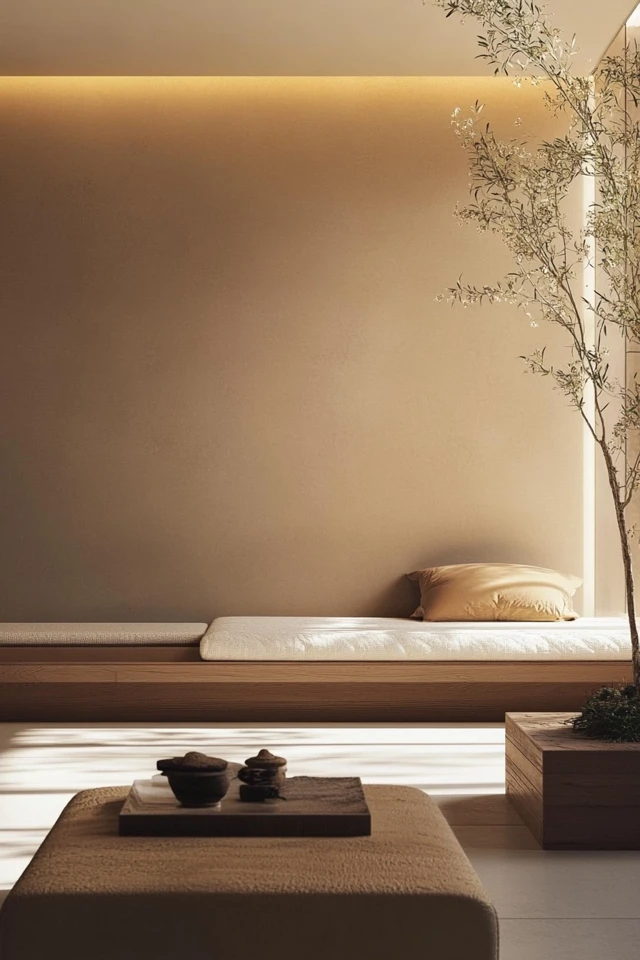
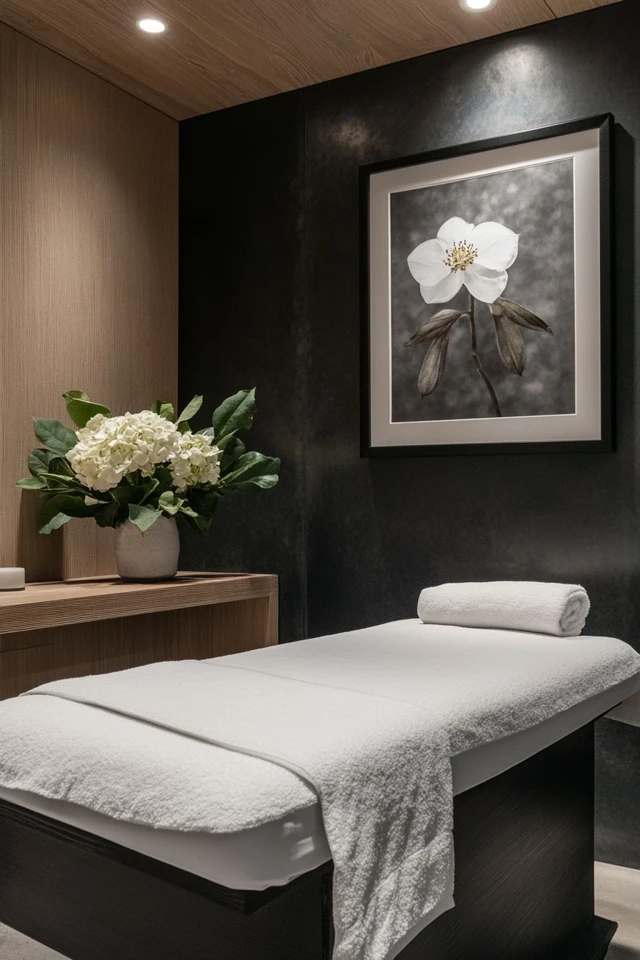
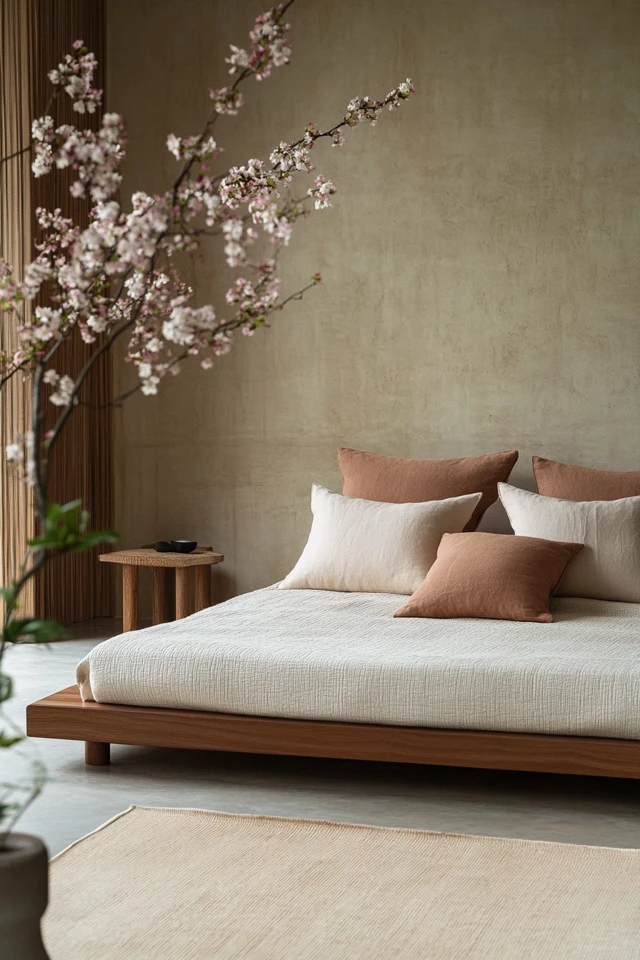
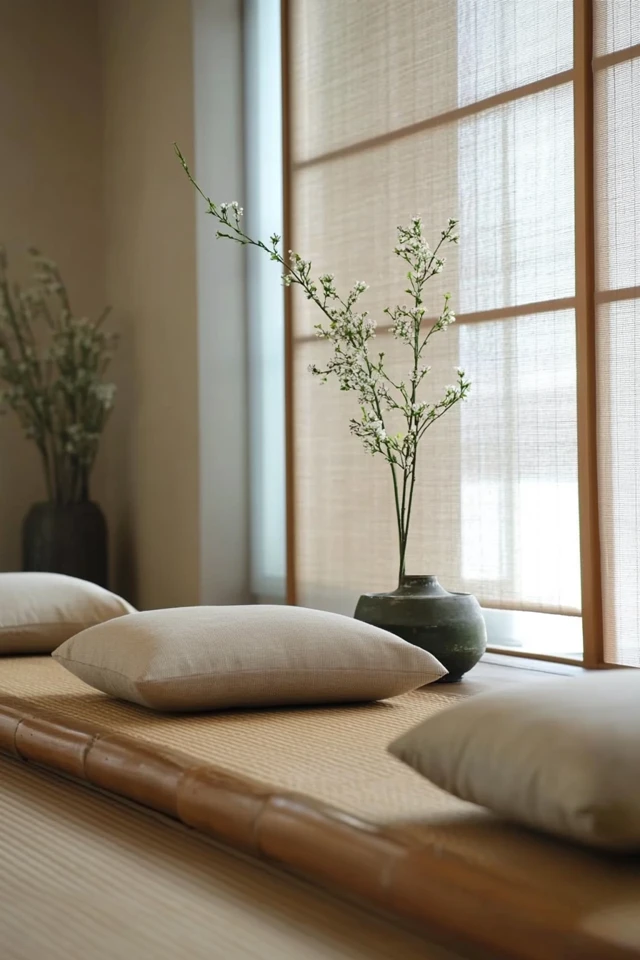
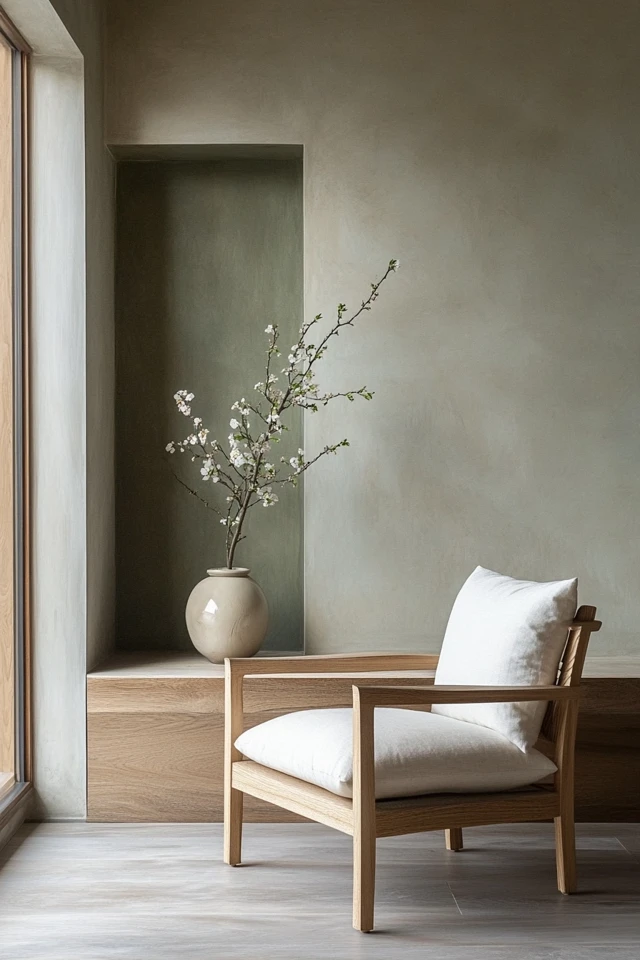
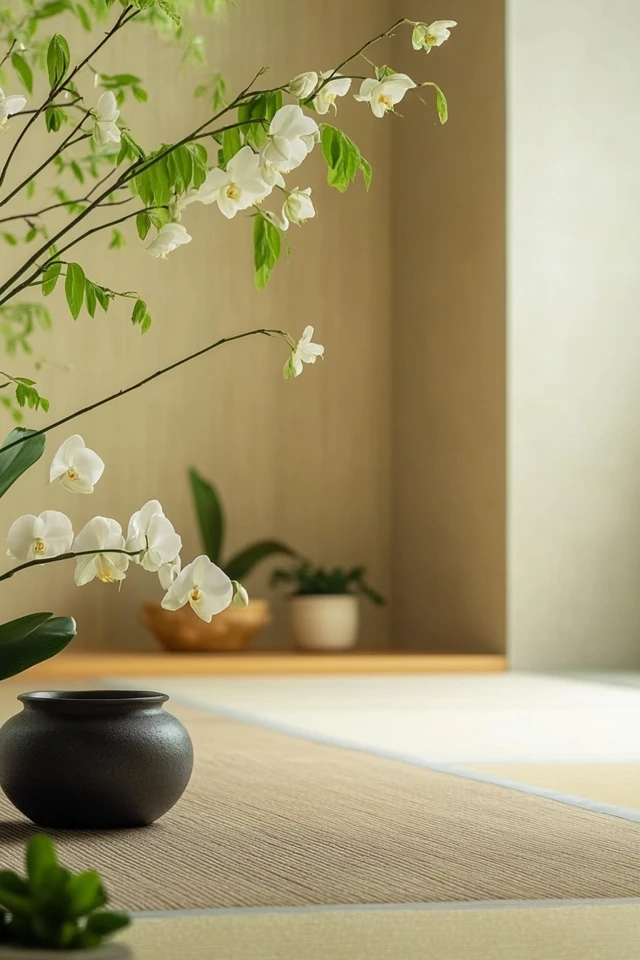
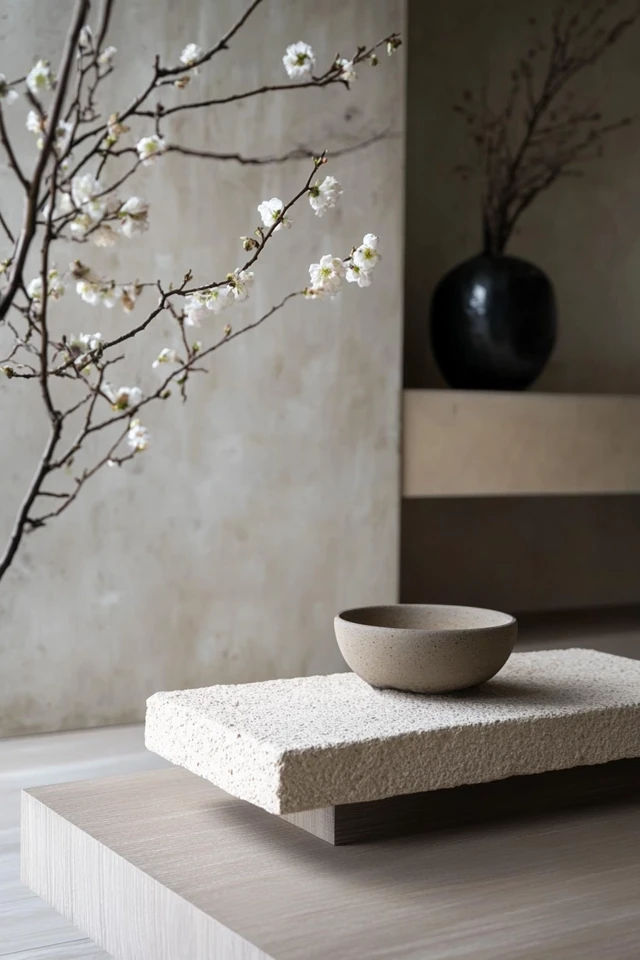
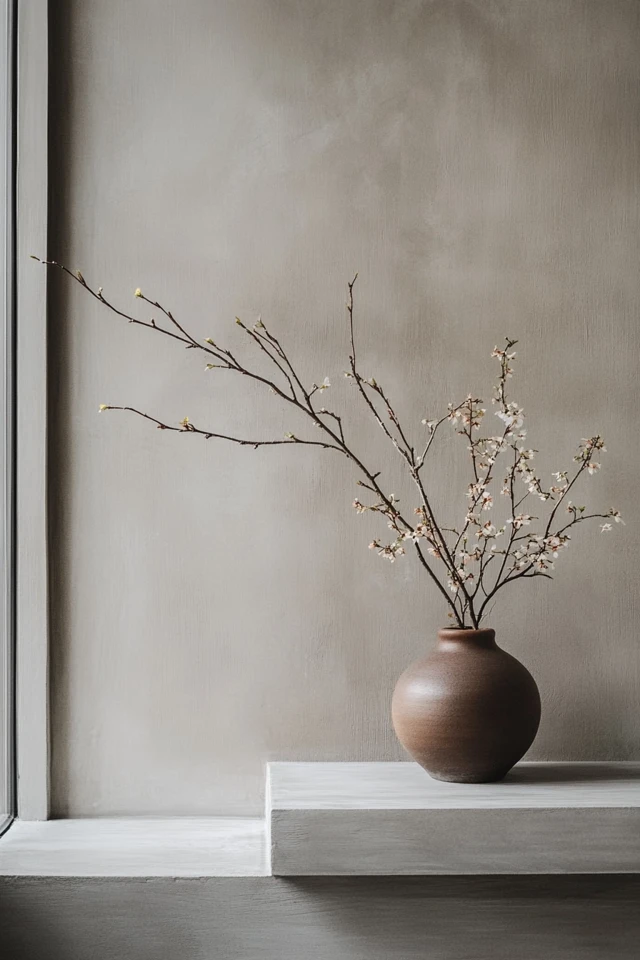
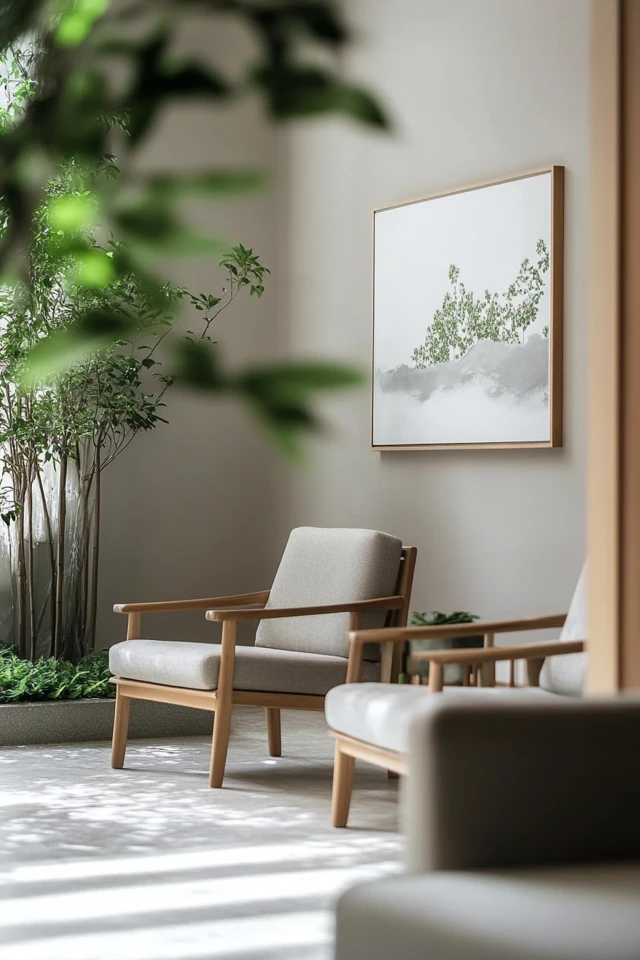
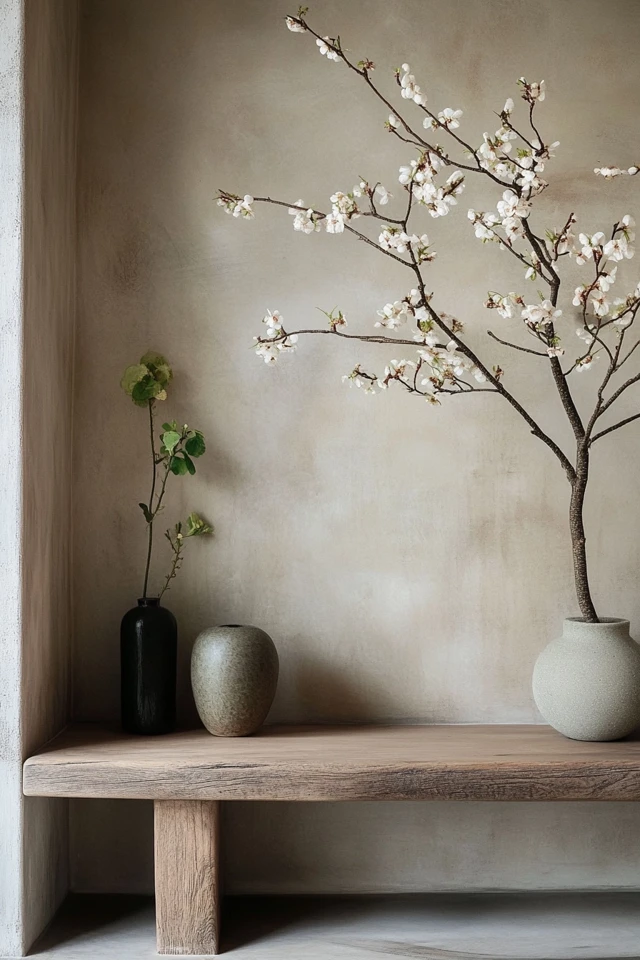
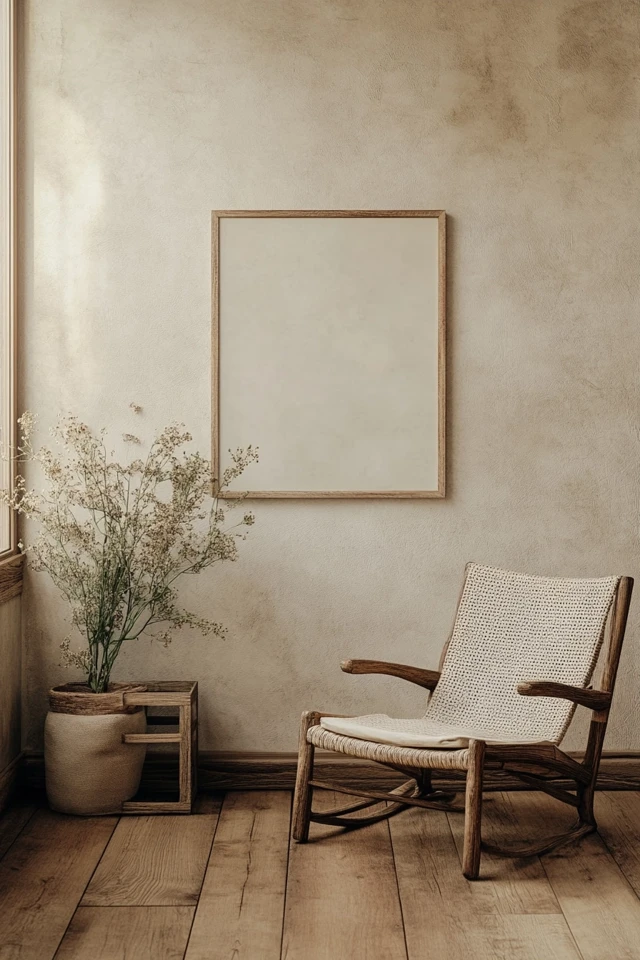
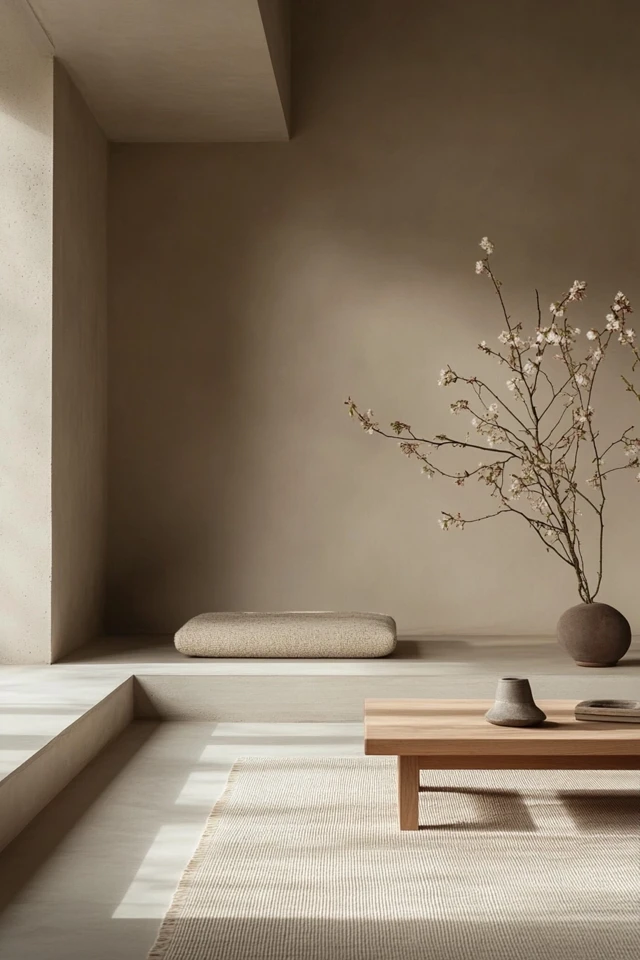
3. Incorporate Natural Elements
Why It Works
Nature plays a central role in Zen design, connecting you to the earth and fostering tranquility.
How to Do It
- Add greenery with low-maintenance plants like bonsai trees, bamboo, or peace lilies.
- Use natural materials like wood, stone, or rattan in furniture and decor.
- Incorporate flowing water with a tabletop fountain for a calming sound.
Example:
A wooden side table with a small bonsai tree and a stone vase creates a simple yet impactful Zen corner.
4. Focus on Soft, Ambient Lighting
Why It Works
Lighting sets the tone for a peaceful atmosphere, and soft, diffused light helps you unwind.
How to Do It
- Replace harsh white bulbs with warm-toned LED or incandescent bulbs.
- Use paper lanterns, floor lamps, or table lamps for indirect lighting.
- Light candles for a flickering, meditative glow.
Styling Tip:
Place a cluster of tea lights on a tray for a subtle, relaxing effect in the evening.
5. Choose Simple, Low-Profile Furniture
Why It Works
Zen design emphasizes functionality and clean lines, avoiding anything overly ornate or complex.
How to Do It
- Opt for furniture with clean, straight lines and natural materials.
- Use low-profile pieces, like platform beds or floor cushions, for a grounded feel.
- Choose multi-functional furniture, such as a storage bench, to keep the room uncluttered.
Example:
A minimalist wooden bed frame with neutral bedding anchors the room without overwhelming the space.
6. Add Soft Textures
Why It Works
Soft, tactile materials create warmth and comfort, balancing the simplicity of Zen design.
How to Do It
- Layer a wool or cotton throw blanket on your bed or sofa.
- Add plush area rugs or tatami mats for underfoot softness.
- Use linen or cotton curtains for a light, breezy feel.
Styling Tip:
A light gray area rug paired with a knitted throw on a chair makes the room feel inviting yet serene.
7. Create a Dedicated Relaxation Corner
Why It Works
A designated space for mindfulness or relaxation helps you disconnect from stress and reconnect with yourself.
How to Do It
- Add a floor cushion or meditation pillow in a quiet corner.
- Place a small table or tray for tea, a candle, or essential oils.
- Use a simple screen or plant to create a sense of privacy.
Example:
A corner with a tatami mat, a meditation cushion, and a single candle becomes your personal Zen retreat.
8. Incorporate Subtle Scents
Why It Works
Aromatherapy can instantly elevate the mood of your space, promoting calm and relaxation.
How to Do It
- Use an essential oil diffuser with scents like lavender, eucalyptus, or sandalwood.
- Burn incense or sage for a grounding aroma.
- Spray linens with a light, calming scent like chamomile or rosewater.
Example:
A diffuser with lavender oil placed on your bedside table sets a peaceful tone for your evening.
9. Balance Space and Flow
Why It Works
A Zen room should feel open and uncluttered, allowing energy to flow freely through the space.
How to Do It
- Arrange furniture to create clear pathways and avoid blocking windows or doors.
- Leave open spaces on shelves and tables to avoid overcrowding.
- Use symmetry or balanced groupings of decor to create harmony.
Styling Tip:
Place two matching floor cushions symmetrically on either side of a low coffee table for balance.
10. Use Art Thoughtfully
Why It Works
Zen-inspired art should enhance the room’s tranquility without becoming a distraction.
How to Do It
- Choose minimalist art, like black-and-white photography or abstract prints.
- Hang a single, large piece rather than multiple smaller ones to avoid clutter.
- Use nature-inspired art, like landscapes or botanical illustrations, to echo the Zen theme.
Example:
A single framed print of a serene mountain landscape above the bed creates a calming focal point.
How to Maintain Your Zen Vibe Room
- Clean Regularly: Keep the space tidy and free of dust to maintain its peaceful energy.
- Declutter Often: Reassess your belongings periodically to ensure everything serves a purpose or brings joy.
- Refresh Plants: Water and prune your greenery to keep it healthy and vibrant.
- Rotate Scents: Change essential oils or candles seasonally to keep the space feeling fresh.
- Commit to Mindfulness: Spend time in your Zen room doing calming activities like meditation, reading, or yoga.
Conclusion
A peaceful, Zen vibe room is all about creating a space where simplicity meets serenity. By focusing on neutral tones, natural elements, and thoughtful layouts, you can design a room that feels like a true retreat from the noise of the outside world.
When I created my own Zen-inspired room, it became more than just a place to sleep—it became a space where I could reset my mind, body, and spirit. Every detail, from the soft lighting to the gentle scents of lavender, contributed to a sense of balance and calm.
Now it’s your turn! Use these tips to transform your room into a Zen sanctuary that brings peace and harmony into your daily life.
FAQ
What colors work best for a Zen vibe room?
Neutral tones like beige, light gray, and off-white, paired with earthy accents like sage green or muted blues, are ideal for a Zen-inspired space.
What kind of furniture works in a Zen room?
Simple, low-profile furniture with clean lines and natural materials, like wood or rattan, works best. Opt for minimalism and functionality.
What lighting is ideal for a peaceful room?
Soft, ambient lighting from paper lanterns, table lamps, or candles creates a calming atmosphere. Warm-toned bulbs are best.
How can I make my room feel Zen on a budget?
Declutter your space, add a few plants, and incorporate affordable decor like candles or a simple throw. Rearrange furniture to improve flow without spending money.
Can a Zen room work in a small space?
Yes! Focus on simplicity, use multi-functional furniture, and keep decor minimal to create a calm and open feel, even in tight quarters.


